Mathew Brady Biography
Mathew Brady was a master photographer, and is responsible for most of the
photographs made during the Civil War. The photograph to your right of Robert
E. Lee was made in Richmond, Virginia just one week after
Lee surrendered the Army of Northern Virginia to General Ulysses S. Grant. Lee wore the same new uniform he had worn for his meeting with
Grant. Lee was reluctant to pose for the photographs, but Brady had known the General since the
Mexican War, and, with the co-operation of Mrs. Lee convinced Lee to have the now famous portrait made. |
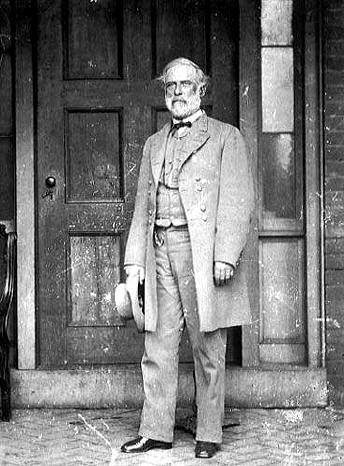 Mathew Brady Photograph of Robert E. Lee Taken just days after the end of the Civil War |
|
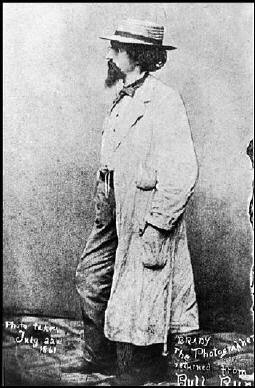
Mathew Brady as a Young Man. Photo taken upon his return from the
Battle of Bull Run (1861) |
Brady took six photos, five of which survived. This standing pose is considered the best made that day, capturing the solemn character of the man who has gone down in history as perhaps the greatest military leader of all time. The camera captures the tense strain of war still weighing heavy on Lee. Roy Merideth, one of the leading experts on the photographs of Lee has remarked, "His bearing is closely controlled, his gaze is sharply direct, but his eyes are shadowed with suffering." Perhaps no other photographer of the time of since could have captured this poignant image. |
Mathew Brady arrived in New York City at the age of sixteen. Soon after taking a job as a department store clerk, he started his own small business manufacturing jewelry cases. In his spare time, Brady studied photography under a number of teachers, including Samuel F. B. Morse, the man who had recently introduced photography to America. Brady quickly discovered a natural gift. By 1844, he had his own photography studio in New York. Brady soon acquired a reputation as one of America's greatest photographers -- producer of portraits of the famous. In 1856, he opened a studio in Washington, D.C., the better to photograph the nation's leaders and foreign dignitaries. As he himself said, "From the first, I regarded myself as under obligation to my country to preserve the faces of its historic men and mothers." He became one of the first photographers to use photography to chronicle national history.
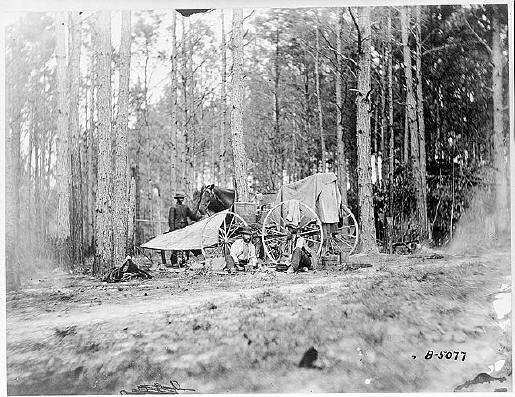
Mathew Brady Photo Crew outside
Petersburg, Virginia circa 1864 At the peak of his success as a portrait photographer, Brady turned his attention to the Civil War. Planning to document the war on a grand scale, he organized a corps of photographers to follow the troops in the field. Friends tried to discourage him, citing battlefield dangers and financial risks, but Brady persisted. He later said, "I had to go. A spirit in my feet said 'Go,' and I went." Mathew Brady did not actually shoot many of the Civil War photographs attributed to him. More of a project manager, he spent most of his time supervising his corps of traveling photographers, preserving their negatives and buying others from private photographers freshly returned from the battlefield, so that his collection would be as comprehensive as possible. When photographs from his collection were published, whether printed by Brady or adapted as engravings in publications, they were credited "Photograph by Brady," although they were actually the work of many people. In 1862, Brady shocked America by displaying his photographs of battlefield corpses from Antietam, posting a sign on the door of his New York gallery that read, "The Dead of Antietam." |
|
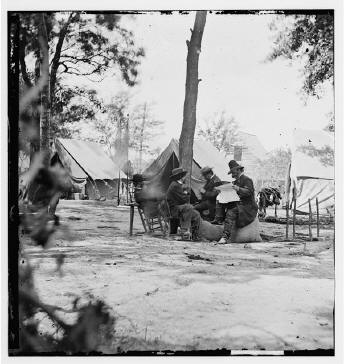
Mathew Brady with
General Burnside. Photograph believed to have been taken at 9th Corps headquarters, Cold Harbor. |
This exhibition marked the first time most people witnessed the carnage of war. The New York Times said that Brady had brought "home to us the terrible reality and earnestness of war." After the Civil War, Brady found that war-weary Americans were no longer interested in purchasing photographs of the recent bloody conflict. Having risked his fortune on his Civil War enterprise, Brady lost the gamble and fell into bankruptcy. His negatives were neglected until 1875, when Congress purchased the entire archive for $25,000. |
Brady's debts swallowed the entire sum. He died in 1896, penniless and unappreciated. In his final years, Brady said, "No one will ever know what I went through to secure those negatives. The world can never appreciate it. It changed the whole course of my life." Despite his financial failure, Mathew Brady had a great and lasting effect on the art of photography. His war scenes demonstrated that photographs could be more than posed portraits, and his efforts represent the first instance of the comprehensive photo-documentation of a war. |
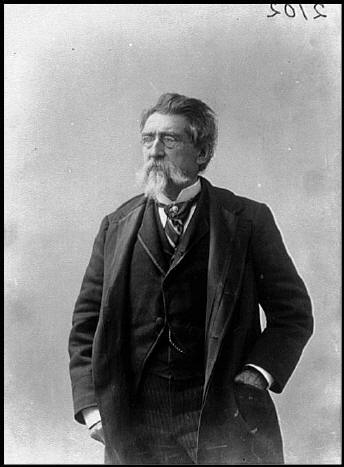
Mathew Brady as an Old Man. |




